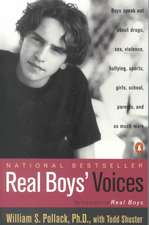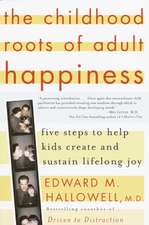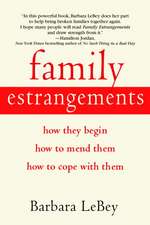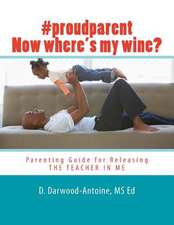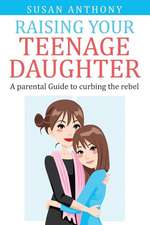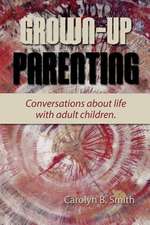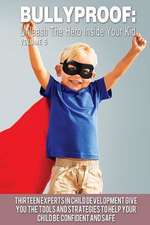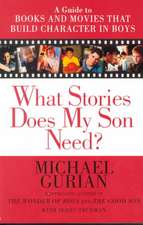Remarried with Children: Ten Secrets for Successfully Blending and Extending Your Family
Autor Barbara Lebeyen Limba Engleză Paperback – 30 sep 2005
As a stepparent with six children in a blended family, Barbara LeBey draws on her own family's hard-won success, as well as on extensive interviews and new research to show how to navigate the stresses, sticking points, pitfalls and perils most couples don't even anticipate. Starting with her first controversial secret--that the new marriage comes first, even before the demands of the children--LeBey debunks prevalent stepfamily myths and anticipates common traps. (Among them, money issues, warring stepsiblings, and destructive exes.) A strong advocate for children (including how to guard against fade-out parenting), she also suggests ways that in-laws, schools, and the legal system itself could provide better support for blended families. REmarried with Children is an expert, compassionate, down-to-earth book to turn to over and over again for advice, support and sanity.
Key topics include how to:
-Meet your children's and stepchildren's needs--without letting them undermine your new marriage
-Understand the new roles, new rules, and the new relationships for children and stepchildren of a blended family
-Deal with angry and/or manipulative exes--without adding fuel to the fire
-Handle key decisions about finances, religion, traditions, behavior and discipline
-Maintain healthy relationships with your children's grandparents--and other relatives--from a previous marriage
-Recognize warning signs of trouble ahead--and get the help you need
From the Hardcover edition.
Preț: 101.24 lei
Nou
19.37€ • 20.23$ • 16.03£
Carte în stoc
Livrare din stoc 25 februarie
Specificații
ISBN-10: 0553382004
Pagini: 304
Dimensiuni: 155 x 231 x 19 mm
Greutate: 0.32 kg
Editura: Bantam Books
Locul publicării:United States
Notă biografică
Barbara LeBey is a lawyer, former judge, and a wife, mother, and grandmother. Her first book, Family Estrangements, was featured in People magazine, as well as on Good Morning America and The Today Show. She lives with her husband in Atlanta, Georgia.
From the Hardcover edition.
Extras
The Obstacle Course
Secret One:
Put the marriage first.
As a more mature person, you can do it right this time. You are en- titled to another chance at happiness, but this time the love that you start your marriage with has to be big enough and wise enough to embrace a ready-made family. Divided loyalties, guilt, unreasonable expectations, unscrupulous people, and manipulative children, even your own, can be obstacles in your way to a successful remarriage. Anticipating them and understanding them will help you to achieve your goals.
While it’s true that all families have a past, blended families have a more complex one—the ghosts of marriages past. These ghosts of prior marriages and divorces can haunt your house and everyone in it, even ruin your present marriage.
“After we returned from our honeymoon, my husband’s two children from his first marriage came to visit for the weekend,” says one distraught second wife. “I had no idea what I was getting into. I was so emotionally drained after their visit, I almost packed my bag and left, except that it was my house, and I certainly didn’t intend to leave my own house. Had I been living in my husband’s home, I probably would’ve left, and that would’ve been the end of a very short marriage.”
Today, when we talk about the blended family, we mean parents and the children and stepchildren from the various marriages. But the distressing fact is that former in-laws, present in-laws, your ex, and your spouse’s ex are as much a part of your new family as the cantankerous old uncle or boozy cousin who used to disrupt every family gathering. This may not be the news you want to hear, but it’s a reality that cannot be ignored. They are and will remain the extended family.
The emotions generated from this archive will invariably spill over into your new family. How much should couples allow this history to penetrate their new lives together? As little as possible. But there’s the rub, because sometimes the new family is virtually held hostage by ex-spouses and ex-grandparents and the damage they can cause, not only to the adults of the remarriage but to the children. Sadly, the children themselves are often enlisted to play the role of saboteurs. It’s true. That kid you love can be out to destroy your new happiness.
Wittingly or unwittingly, ex-spouses, natural children, stepchildren, former in-laws, as well as present in-laws, can trigger unlovely emotions in you, too. Jealousy, unreasonable expectations, divided loyalties, and guilt are common even in the most well-adjusted adults. Those are the obstacles we put in our own way. Typically, these emotions lead to defensive or manipulative behavior as one attempts to eliminate these new intruders from one’s life or, at the very least, to minimize the damage they can cause.
Human relationships work like the law of physics—matter cannot be created or destroyed. It’s the same way with a previous marriage. It cannot become a marriage that never existed; the ex-spouses never disappear, and the kids are never unborn. Maybe your husband’s ex-wife is still pining away or showing up at odd hours to peek in your windows or calling at the last minute to change visitation dates.
In the stories that follow, heightened emotions of family members are vividly illustrated by the events of the blending process. You will see that when you put the marriage first, you benefit the blended family far more than if you as a newly married couple had focused only on the children’s adjustment to your new relationships. SAcred Vows
Ancient words of wisdom from the Bible advise newlyweds to place their loyalties to their spouse—“leave your father and mother and cleave to your [spouse.]” (Gen. 2:24) If it were written today, I believe the adage would certainly encompass second marriages, where the stakes are even higher and where many more people have claims on the time, attention, and emotions of the married couple.
With first-married couples trying to form an independent family, they must renegotiate relationships with parents and extended family. And since those bonds took years to form, the process of breaking away to create a new unit isn’t automatic. It’s an ongoing task. But we don’t break away from children, so the challenge of forming a solid and loving marriage must include the connections to children from prior marriages as well as to the people who are related to those children.
A successful remarriage is a gift to everyone concerned, and particularly to children who have already suffered through the death of a parent or through a failed marriage. They don’t need another loss or failure. Experts who advocate that the children must come first are losing sight of the effect another divorce would have on the children. Nevertheless, it’s not unusual for children of divorce to view the new marriage as a threat to achieving their fantasy—getting their natural parents back together, restoring what they have sadly lost, and maintaining the close and loving relationship they had with a parent who is now in the throes of love and passion with a new partner. This means that putting the marriage first is, in every sense, the ultimate challenge of most remarriages with children.
The first remarriage I’ll discuss began with an adulterous affair. This is not the best way to begin blending a family, but it happens more often than most of us would care to admit. It is a particularly interesting story because so many of the people involved agreed to be interviewed—the remarried couple as well as a child from each of their prior marriages. It is also a microcosm of the multiple problems that can plague a blended family. The “Spookaboos” of Previous Marriages
At the time of our interview, Cynthia, a vivacious fifty-year-old woman, had been married to her second husband, Ted, for over twenty years. Cynthia and Ted have two children each from their first marriages.
“My dream all through childhood was to have a family of my own,” Cynthia told me. “I was the third child in my own family, the youngest by eleven years, so I always felt like an only child, with much older parents who had little time or patience for me. What I saw in other families was warmth and a sense of belonging that I never felt.
“As soon as I graduated from college, I rushed into my first marriage, because that was what my friends were doing, but I really didn’t know my first husband very well. I married for all the wrong reasons, not the least of which was to get away from home and because, as I said, it was the thing to do at the time.
“We turned out to be totally mismatched—different values, interests, and different goals for the future—only I didn’t know that when we got married. After five years and two children, I knew that I wanted a divorce, but I didn’t have the financial means to go it alone. Besides, if we divorced, my husband’s alimony and child support payments would be very limited. That’s when I decided to become a real estate agent. For the next five years, I worked hard and built a good career. My husband and I tried to get along, but we just couldn’t.”
To understand the problems that developed in Cynthia’s second marriage, it’s important to know the circumstances of their lives when she and Ted first met.
“Ted was married but wasn’t living with his wife. We both got our divorces and married about a year later. During the early years of our relationship, his first marriage was always a ‘presence’ in our home. It was as if his first wife, Valerie, was literally haunting us.”
What Cynthia wasn’t prepared for was the shock and difficulty of dealing with some very troubled people. When she got to know Ted’s children, she understood what the late Ann Landers had to say on the subject: “The biggest cause of the breakup of a second marriage is the children.”
“Ted’s two children were the same ages as my children, which could have been an advantage, but it wasn’t. It only aggravated the problem. Ted’s twelve-year-old daughter, Rose, was hell-bent on destroying me, destroying our marriage, and getting her father to go back to her mother. With her mother’s prompting, Rose told terrible lies to her grandmother—Ted’s mother. She made up a story about my husband and me having sex in front of her and the other children. She accused me of using foul language and inflicting cruel punishments. At first I laughed at the absurdity of the accusations—until I realized how damaging they were, mainly because my husband’s mother wanted to believe they were true. In fact she did. That way she could convince herself that her son had married a depraved woman with monstrous kids who were having a destructive influence on her precious grandchildren. By playing into Valerie’s strategy and collaborating with her, my new mother-in-law could insure that her regular weekend visits with her grandchildren continued, instead of their coming to visit us.
“Having children of my own, I should’ve realized when divorced people marry each other, they’re getting involved with all the people from both former marriages. But when Valerie managed to drag my ex-husband into this test of wills, I thought I would lose my mind. She persuaded him to participate in her plan to destroy us as a couple.
“Despite the fact that my ex-husband knew me well enough to know there wasn’t any truth to these stories, he was so angry about my leaving him, and about his financial obligations to the children, that he was willing to collaborate with Valerie, even if it hurt our children.
“So, when my two children were with him for weekends or other visits, he vilified me. My daughter began to resent him. She refused to go with him when he came to pick her up. My son was too young to understand what was happening, so he continued his visits, and had to listen to all the vitriolic lies about me. When my daughter told me what her father was saying, I should’ve tried to stop it. But I’m not sure what I could’ve done, short of going back to court and having my daughter testify as to what was going on. And that was also true for Ted, because Valerie and his mother were doing the same thing—poisoning his daughters against us. There were times when I wanted to call it quits, but I loved Ted and knew that he loved me. We felt we deserved a chance to have a good life together. We hoped that our love for each other and for the children would save the day.”
My interview with Ted filled in the picture of his first marriage. “My wife came from a broken home. She was raised by an aunt and uncle, both staunch fundamentalists who believed spare the rod and spoil the child. I believe it had a very damaging effect on her. The first few years of our marriage were fine; then Valerie developed a serious drinking problem. When she was drunk, she became physically abusive to me and to our two daughters. We fought all the time, though it was usually Valerie screaming at me, and me taking it. I usually didn’t respond. That only made her angrier until she became physically violent. I should’ve left her years before I actually did, but I was afraid to leave the kids in her custody, and I certainly couldn’t work and take care of them.”
Nonetheless, when Ted divorced Valerie, he made no attempt to gain custody of his two daughters, then nine and twelve years old. He wanted to avoid a jury trial and the ugly revelations of Valerie’s alcoholism, the abuse, and her repeated infidelity. Instead, he agreed to a generous property settlement, alimony, and child support.
Though Ted was no longer living with Valerie when he met Cynthia, Valerie believed Cynthia was the cause of her marriage breakup. In the months before Ted and Cynthia’s marriage, Valerie began her campaign of vengeance. She placed an “anonymous” call to the Family and Children’s Service accusing Cynthia of abusing her own children. Cynthia hired a lawyer, who obtained a copy of the taped call. Valerie’s voice was unmistakable. Nevertheless, it triggered a full and humili- ating investigation of Cynthia’s home life, which ultimately came to nothing.
To avoid an escalation of the problem, Cynthia and Ted chose not to retaliate against their former spouses. All four children were being used as pawns in this dangerous game, particularly Ted’s older daughter, who had nothing but contempt for Cynthia.
The vicious intrusion from their prior marriages into their newly reconstituted family created an anguished environment for Cynthia and Ted. They would have been better off if they could have relocated to another city, but their careers and the visitation agreements precluded such a move. After three years of enforced visitation, Ted’s two children stopped seeing him.
“There was no point making them do something they didn’t want to do,” he said. “And their visits just caused havoc for all of us, so I decided to let it go.”
Both Cynthia and Ted say if they had it to do over again, they would still marry each other even if it meant going through the torment of those first few years. But they both admitted how naïve they had been. “What we needed,” Cynthia said, “and didn’t have was someone to tell us what we could expect. We were both blindsided.”
Once Ted’s children stopped visiting, Valerie became less of a problem, though she still made drunken calls in the middle of the night. Although Cynthia and Ted finally settled into a comfortable and relatively happy marriage, the fallout for the children had left indelible scars. Cynthia’s older child, Amanda, remains close to both of them. One of Ted’s daughters remains distant to him and to her mother and sister. Cynthia’s son is not close, but Amanda believes it is due to the “years of awful lies my father told about my mother.” Amanda was old enough to see through them, but her younger brother was “easily brainwashed.”
When Amanda stood up for her mother, her father cut her out of his life forever. “I’m just glad I have my mother and Ted,” Amanda told me. “He’s been a wonderful stepfather. Both of them have done everything for me.”
“In families like ours,” Cynthia said, “bitterness, revenge, and anger are constantly threatening to undermine the new family. Even destroy it. I’m just so grateful that the children have thrived and that Ted and I have had so many wonderful years together.”
Many Perspectives
What could Ted and Cynthia have done to prevent these painful and enduring family rifts? Were they truly helpless in face of the damage that was being inflicted by their former spouses and even Ted’s mother during the early years of their marriage?
One answer lies in Ted’s handling of his relationship with Rose, his older daughter, who had worked so tenaciously to break up her father’s marriage to Cynthia. She tried to turn into reality what many children fantasize about—that their parents will get back together again and reestablish the home that was broken. Right at the beginning, Ted should have sat down with Rose and explained to her that many times a married couple find that they are unable to live together anymore but that it doesn’t mean they love their children any less. This is particularly important for the parent who has moved out, since the children will inevitably experience a sense of rejection, abandonment, and jealousy of the new spouse. Rose’s world had fallen apart, so she tried to manipulate the situation in order to get her family back—the only family she ever wanted. And this was the time when Cynthia needed to show her new stepdaughter some real understanding and greater affection, though it was the hardest time to do both.
Ted’s younger daughter, Paula, shed additional light on the situation. In our interview, Paula blamed her mother for most of the problems but said she resented that her father had given up so easily when she and her sister had stopped their visits with him. She felt that he should have tried to gain custody of her.
“My father knew how destructive my mother was when she was drinking, and that was most of the time. But he did nothing. He was too passive. Rose was the one who told all those lies, but it was at my mother’s instigation. Rose became a very mean-spirited person, a lot like our mother.” Paula also felt that Cynthia didn’t seem to want anyone in her life except Ted and her own children.
Paula admitted that Cynthia had tried hard to make the new family work, “but I could tell how angry she was at my sister—she had good reason to be angry, and I know Cynthia was relieved when we stopped coming to the house for visitation. I don’t blame her. She had it pretty rough with all that my mother did to her.”
When asked if she wanted to build a closer relationship with her father, Paula said yes. “He did a lot of harm by never letting me know that I meant something to him, but I love him and know he loves me.”
Both Ted and Cynthia should have been more realistic about the potential fallout from their quick remarriage. According to one Episcopal priest I consulted, Ted and Cynthia should have put their relationship on hold, properly divorced their spouses, and then allowed themselves more time to heal their first families before marrying. “The stigma of Cynthia being viewed as the home wrecker might have been avoided. The fury of both ex-spouses might have been lessened had they waited an appropriate amount of time before beginning their courtship.”
In response to this advice, Cynthia said, “We loved each other and didn’t want to wait. For too long, we’d both been through hell. We felt we deserved some peace. Granted, we were foolish to not get ourselves better prepared to deal with all these heightened emotions, but I suppose because we were in love, we expected too much. And Ted couldn’t handle the guilt he felt about leaving his kids, but he thought fighting for custody was out of the question. We just wanted to be happy.”
A different perspective comes from Jean Rosenbaum, M.D., a psychiatrist and author of Stepparenting. “Those marriages that are broken over love affairs were probably not very satisfactory to begin with. It is rare for happily married people to risk spoiling a marriage by having affairs.” However, even if the divorce was inevitable, the ex-spouse is likely to perceive the current spouse as a home wrecker, triggering “the wrath of the [spouse] scorned.” And, as in Ted and Cynthia’s case, the children are frequently brought into the crossfire.
Dr. Rosenbaum urges that the spouse labeled the seducer or home wrecker not become overly defensive, because “people’s gossip will quickly fade. They will become bored with the first mate’s endless idealizing of the old, long-dead marriage. Time will reveal to all that you and your mate are actually happy.” It’s still important, however, to empathize with the abandoned ex-spouse, who may be glorifying a failed marriage to shore up sagging self-esteem.
Yet another opinion was voiced by a marriage counselor who heard the taped interviews. She concluded that both Ted and Cynthia were so damaged by the unhappiness of their first marriages that they were really incapable of handling this reconstituted family without the help of an experienced therapist. There were too many issues—divided loyalties, guilt, and power plays—in this situation. Also, Ted’s passive nature was a major contributing factor in perpetuating the damage to himself, first in his long-term endurance of his first wife’s abuse and then in allowing his children to walk out of his life rather than maintaining contact with them, even if it meant less frequent visits that wouldn’t have included Cynthia. By not seeking to enforce visitation, he conveyed the wrong message to his children—that is, they didn’t matter to him enough to fight for them. Unfortunately, Ted saw adversity as inevitable while, at the same time, he retreated from it.
“When people are being edged off their territory, battles begin,” Ted said. “There’s nothing much to be done about it.”
Despite the problems with two of the four children, Cynthia and Ted’s remarriage can be called “successful” by the definition offered in the introduction—the marriage endured happily and the children grew up to lead productive lives. Some people might not agree with these criteria for success, but what other measurement could there be? Even in nuclear families there are estrangements, unhappiness, and sibling rivalries that continue through adulthood. The fact that Ted and Cynthia loved each other and made their marriage a priority ultimately worked toward the good of the children.
Missteps
In her book Family Politics: Love and Power on an Intimate Frontier, Letty Cottin Pogrebin says of children in stepfamilies: “Beyond the complex interactions is one stunning surprise: The stepfamily configuration seems to increase the power of the child. That is to say, compared with other parents, remarried parents seem more desirous of their children’s approval, more alert to the children’s emotional state, and more sensitive in their parent-child relations. Perhaps this is the result of heightened empathy for the children’s suffering, perhaps it is a guilt reaction; in either case, it gives children a potent weapon—the power to disrupt the new household and come between the parent and the new spouse.”
Jealous children can do unscrupulous things, even when they are motivated primarily by a need to protect themselves from the wrenching dislocations taking place in their lives. You do your children no favor to allow them to engage in destructive behavior. Certainly you can try in positive ways to make up to them for the hurt you may have caused. But that doesn’t mean buying them off, nor does it mean ruining your new marriage to satisfy their need to get back at you. You can teach them to treat you and your new spouse differently. Let them know that whatever they’re doing to hurt you is destructive not only to you, but also to them. Most children don’t enjoy being hateful. What they really want is the feeling that they are loved and secure, with clear parame- ters and structure. This was a lesson that Joyce and Leonard learned the hard way.
The Taming of a Step-Brat
Leonard married Joyce after a long and loving courtship. He felt close to Joyce and looked forward to being a good stepfather to her thirteen-year-old daughter, Elise. He wanted to give them all the things they could not afford on Joyce’s small salary and the inadequate child support she received from her first husband. Leonard had never been married before, though he’d been engaged to a young woman who had died of cancer before their marriage. Leonard fantasized that Elise would be happy to have a stepfather who was eager to look after her and provide some of the luxuries she had never had. Elise was polite but aloof during the two years of her mother’s courtship with Leonard.
Just before Joyce married Leonard, Elise begged her not to go forward with the marriage. Joyce was shocked to discover that Elise didn’t want anything to do with Leonard as a stepfather, that what she really wanted was to have her mother all to herself. And that Leonard’s presence made Elise feel disloyal to her own father, who couldn’t give her all the “nice things” Leonard could give her. “Once,” Joyce said, “Elise told me she felt that Leonard was trying to buy her away from her father.”
Joyce knew that Leonard was a kind and gentle man and felt confident that Elise would eventually learn to love him. Certainly Elise was old enough to understand and respect the marriage. Wisely, Joyce refused to allow her daughter to stand in the way of her happiness. But she underestimated Elise’s desperation and determination.
After the wedding, Elise’s politeness vanished, and what emerged was a pattern of rejection of Leonard’s attempts to be a good stepparent. She ignored him and spoke only to her mother. At mealtimes, she treated him as if he weren’t there, or she was hostile and rude to him. She typically acknowledged his presence only with the phrase “Oh, he’s here.” Every time Leonard entered a room where Elise was, he received her hateful stare. He ignored Elise’s bad behavior. Eventually, she began to bait him into disciplining her by attacking her own mother with angry outbursts in Leonard’s presence.
Leonard’s hopes of becoming a wonderful new father figure were quickly diminished. Joyce, not knowing what to do to keep everything from falling apart, wondered if she’d made a big mistake by marrying Leonard while Elise was still going through adolescence. But because Leonard was a mature and patient man, he continued to be affable while ignoring the spiteful behavior of his stepdaughter. Joyce was increasingly saddened and anxious in her own home.
One morning after Leonard had gone to work, Joyce finally confronted her daughter. “Elise, you’re behaving like an ungrateful, spoiled brat. No matter how badly you treat Leonard, he is always kind and giving, which only makes me love him more. I’m not going to subject Leonard to your rudeness at the dinner table. Frankly, I’m embarrassed by your behavior. You can have your dinner before we do and then go to your room.”
Joyce’s clear boundary setting resonated with Elise—it jarred the girl’s fear that she might lose her mother’s devotion.
Elise didn’t suddenly love Leonard, but she did stop treating him like the enemy. Joyce regained control of her own home, and her marriage to Leonard thrived. After a couple of years, Elise not only accepted Leonard, but actually grew fond of him. He harbored no resentment toward her, understanding that she was an adolescent who had had her mother’s undivided attention until he’d come into their lives, and a feeling of disloyalty to her biological father. Stepparents should expect that the children will be jealous of the relationship between their parent and the new stepparent. This jealousy abates as the children begin to accept the presence of the stepparent as routine, and actually begin to receive some emotional benefit from the relationship. Leonard was mature enough to understand that. Everyone learned something valuable—that it takes a family time and patience to blend, and if the new marriage is successful, ultimately everyone benefits.
What About the Kids?
Do we actually know whether the children of divorce are better or worse off if their parents remarry? Without consulting the data, we can easily construct an argument for how children benefit when their parents enter a new marriage. First, the presence of a new parent helps relieve the stresses and demands of single parenthood. Someone else is around to share the household responsibilities and help raise the children. Second, the remarriage can bring another earner into the family. A stepfather’s income can reverse the economic slide that afflicts many divorced mothers and their children. According to Greg Duncan and Saul Hoffman, the authors of Economic Consequences of Marital Instability, children in remarriages are almost as well off economically as children in first marriages.
But a counterargument can be made: Adjusting to so many new relationships and having the natural parent’s attentions diverted may add a layer of problems over and above that of divorce.
Though there are comprehensive studies of families after divorce, there have not been comparable studies of blended families done in the United States over the extended period of time needed to evaluate children growing to adulthood. We can extrapolate from a landmark divorce study done in this country by researcher E. Mavis Hetherington (now an emeritus professor of psychology at the University of Virginia), because she includes children who have been raised in stepfamilies after divorce. And there are two studies of stepfamilies, one by James Bray, Ph.D., a psychologist at Baylor College of Medicine in Houston, and the second, an extensive research project done in Great Britain.
As reported in For Better or for Worse, Hetherington’s research study followed 1,400 families, including adult children from stepfamilies. Hetherington’s most notable findings challenged earlier warnings about the negative long-term effect of divorce on children. These, she asserted, have been “exaggerated to the point where we now have created a self-fulfilling prophecy.” Her conclusion: “Most of the young men and women from my divorced families looked a lot like their contemporaries from non-divorced homes.” However, some of her most disquieting interviews revealed the pain and confusion felt by those living in stepfamilies. Fifty percent of the remarriages she studied failed. Nonetheless, 75 percent of the youngsters in her study ultimately did as well as children from intact families.
Outcomes, Hetherington says, depend on many factors: the rea- sons for the divorce; parenting skills; the level of support both adults and children receive from family and friends; the individuals’ willingness to change and grow in the face of new challenges. “Although [children] looked back on their parents’ breakup as a painful experience,” Hetherington writes, “most were successfully going about the chief task of young adulthood: establishing careers, creating intimate relationships, building meaningful lives for themselves.”
James Bray’s study, which was funded by the National Institutes of Health, followed one hundred white, middle-class stepfamilies and one hundred comparable non-divorced families over a nine-year period. His book Stepfamilies focuses primarily on stepfamilies consisting of a natural mother and stepfather. He concludes that stepfamilies are happiest when the husband and wife view their relationship as a “partnership” rather than as a “matriarchal” family. Like Hetherington, he also found that though children in stepfamilies tended to have behavior and emotional problems, 75 percent of stepchildren did well, compared with 85 to 90 percent of kids in non-divorced families.
The largest study involving stepchildren is the British National Child Development Study, which was based on a long-term survey of seventeen thousand children born in 1958 who were followed through adulthood. The authors of this study (two family therapists, a research professor, and a child psychiatrist) identified fifty subjects who had become stepchildren by the age of sixteen. When these children reached age twenty-three, the researchers conducted “lifestory interviews,” which took two to six hours.
The goal of the study was to gain an understanding of the long-term effects of children’s growing up in nuclear families that transitioned to stepfamilies. What is remarkable, especially given the real hardships faced by the people interviewed, is how well they fared, in both love (all but seven had married, with three-fourths of the ever-married still in a first marriage) and work. Almost all of these young people were thriving in their careers and had risen above their own parents’ level of achievement.
Overall, the study presents a positive picture of a stepchild’s ability to adapt to the remarriage of one or both of their parents. The authors concluded that children in blended families are generally doing well and that the most important factor in determining the impact of stepfamily experience for children was the quality of their relationship with their remaining natural parent.
The findings also demonstrate how important it is to communicate with children about the transitions taking place in their lives during divorce, death, and remarriage. Talking openly and supportively lessens the confusion and fear that usually accompanies these profound alterations in a child’s life.
Researchers consistently tell us that family structure itself—nuclear, single-parent, or blended family—does not determine how happy, how socially well-adjusted, or how academically successful children will be. From the available research, it would be safe to say that children from nuclear families do not fare that much better overall than those from second-marriage families. What experts in the field continue to report is that exposure to prolonged conflict is harmful to children and that it is the quality of relationships, not the type of family, that makes a difference to children’s psychological well-being. Where a stepfamily is loving and nurturing, and where the children are able to continue good relationships with their natural parents, they will thrive almost as well as children from intact families.
From the Hardcover edition.
Descriere
It's the most daunting task many parents will ever face: bringing two growing families together into one brand new marriage. But even though statistics show that most remarriages are at high risk--especially when there are kids involved--more and more people are learning how to make them work and more and more kids are coming out of them with their psyches and souls intact. This honest and hopeful book looks at those successes--and at some failures--to show what they have in common: ten essential secrets that are at the heart of a healthy blended family.
As a stepparent with six children in a blended family, Barbara LeBey draws on her own family's hard-won success, as well as on extensive interviews and new research to show how to navigate the stresses, sticking points, pitfalls and perils most couples don't even anticipate. Starting with her first controversial secret--that the new marriage comes first, even before the demands of the children--LeBey debunks prevalent stepfamily myths and anticipates common traps. (Among them, money issues, warring stepsiblings, and destructive exes.) A strong advocate for children (including how to guard against fade-out parenting), she also suggests ways that in-laws, schools, and the legal system itself could provide better support for blended families. REmarried with Children is an expert, compassionate, down-to-earth book to turn to over and over again for advice, support and sanity.
Key topics include how to:
-Meet your children's and stepchildren's needs--without letting them undermine your new marriage
-Understand the new roles, new rules, and the new relationships for children and stepchildren of a blended family
-Deal with angry and/or manipulative exes--without adding fuel to the fire
-Handle key decisions about finances, religion, traditions, behavior and discipline
-Maintain healthy relationships with your children's grandparents--and other relatives--from a previous marriage
-Recognize warning signs of trouble ahead--and get the help you need
From the Hardcover edition.

